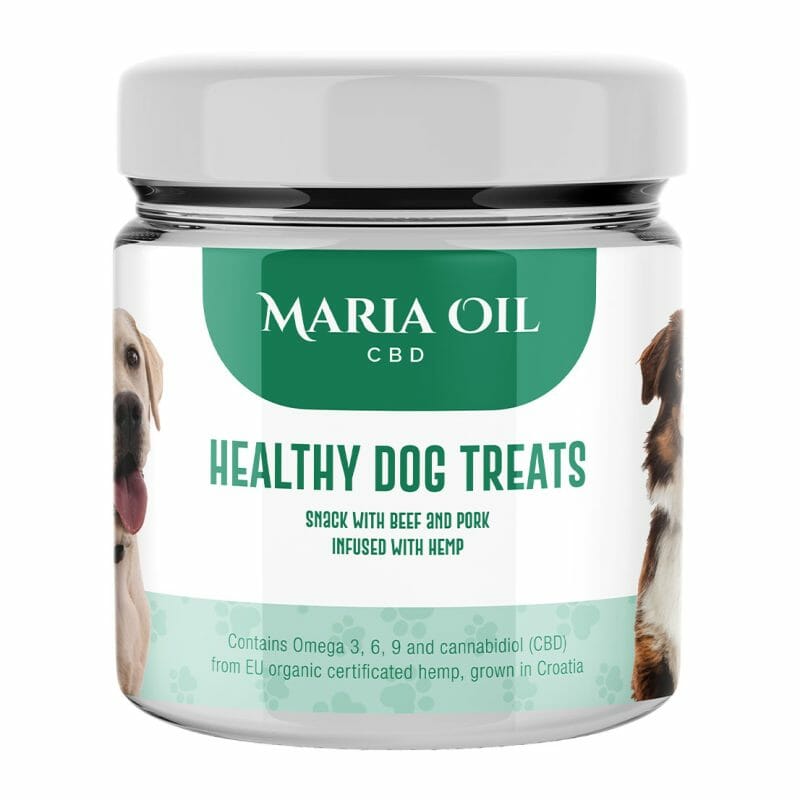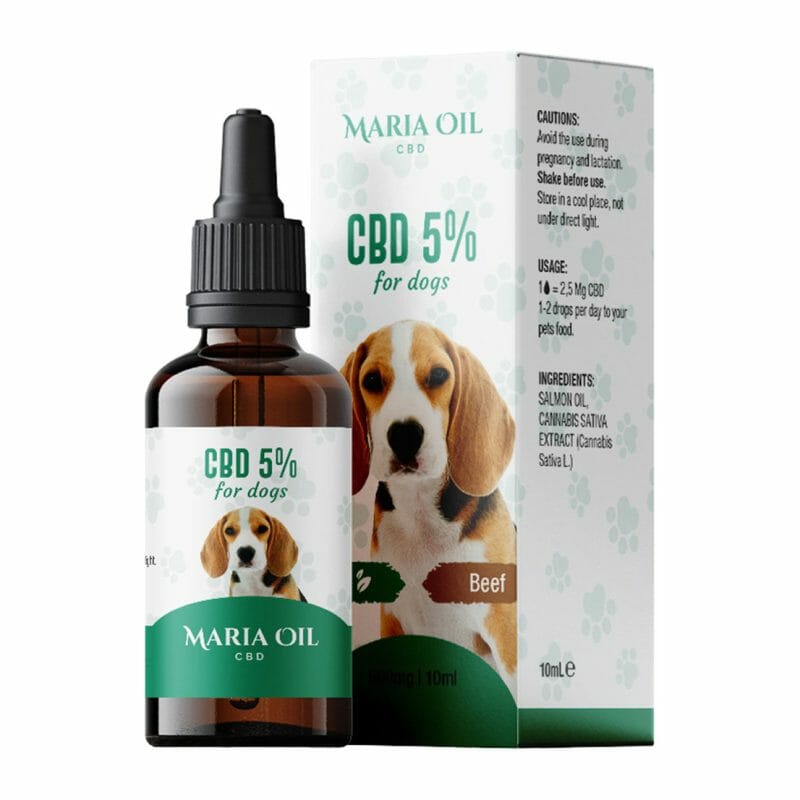Nutrition plays a key role in the well-being of any animal, especially those with specific conditions such as arthrosis. A proper diet can greatly improve health and strengthen the immune system. For this reason, we have prepared an in-depth look at the best products for dogs with arthrosis. Check out our recommendations and tips to ensure that your faithful four-legged friend receives the most suitable nourishment to manage this disorder. Don’t miss our selection of the best products for dogs with arthrosis.
What is canine arthrosis?
Canine arthrosis is a common degenerative condition affecting the joints of dogs. It is characterised by a progressive deterioration of articular cartilage, the smooth tissue that lines the ends of bones where they meet to form a joint. When the cartilage erodes, the bones can rub directly against each other, causing pain and inflammation.
This disease can affect dogs of any age, but is more frequent in the elderly and in large breeds. Factors such as obesity, genetic predisposition and previous joint injuries may increase the risk of developing osteoarthritis. Symptoms include lameness, difficulty moving, stiffness especially after resting, and reduced physical activity. Affected dogs may also show increased irritability due to pain.
The treatment of canine arthrosis is focused on managing pain and slowing disease progression. Treatment options may include anti-inflammatory drugs, supplements such as glucosamine, dietary modifications, and physical therapies such as hydrotherapy. Maintaining a healthy body weight is crucial, as excessive weight can increase stress on compromised joints. In some cases, surgery may be necessary to improve the dog’s quality of life.
Early diagnosis and timely intervention are crucial to effectively manage canine arthrosis and help the dog maintain an active and comfortable life.
-
Product on saleCBD Crunchies for Dogs Chicken and TurkeyOriginal price was: £24.99.£12.50Current price is: £12.50.
-
Product on saleCBD dog kibble with Beef and PorkOriginal price was: £24.99.£12.50Current price is: £12.50.
-
Product on saleCBD Oil 5% for DogsOriginal price was: £19.99.£11.99Current price is: £11.99.
Recognising the Signs of Arthrosis in Dogs: What to look for
Arthrosis is a condition that afflicts many dogs, especially older dogs, and can have a significant impact on their quality of life. Being able to recognise the symptoms of arthrosis in dogs is crucial to ensuring they receive the necessary care and attention. This degenerative joint disease manifests itself through a series of signs that owners should learn to identify.
The first obvious sign of arthrosis in a dog is often a limp or difficulty in movement. This may be particularly noticeable upon awakening or after prolonged periods of rest, when the dog may appear stiff or have difficulty standing. The lameness may not be constant; it may appear and disappear, and may worsen with exercise. In some cases, dogs may even avoid using a limb completely if it causes them pain.
Another common symptom of arthrosis in dogs is a change in their behaviour. A dog that is usually active and playful might become more reluctant to play or hesitate before jumping or running. They might also avoid activities that were previously part of their daily routine, such as climbing stairs or jumping on the bed. In addition, arthrosis may cause increased irritability and decreased social interaction, as pain and discomfort may make the dog less tolerant and more eager to be alone.
Loss of flexibility is another sign of arthrosis in dogs. Owners may notice that their dog has difficulty bending or moves more rigidly than before. This can also lead to a change in posture, with the dog trying to compensate for pain by distributing weight differently or adopting unusual positions to relieve tension on affected joints.
Arthrosis can also cause a change in the dog’s musculature. Due to the reduced use of the affected joints, the surrounding muscles may weaken or atrophy. This can lead to further joint deterioration, as the muscles are no longer able to adequately support the joints.
Dog owners may also notice swelling or heat around the affected joints. These are signs of inflammation and may be accompanied by sensitivity to touch. In some cases, the dog may react painfully to palpation of the inflamed joints.
It is important to note that arthrosis in dogs is not curable, but can be successfully managed through a combination of treatments. These can include medication for pain and inflammation, dietary modifications, supplements, physiotherapy and lifestyle modifications, such as adapting exercise to the dog’s abilities.
-
Product on saleCBD Crunchies for Dogs Chicken and TurkeyOriginal price was: £24.99.£12.50Current price is: £12.50.
-
Product on saleCBD dog kibble with Beef and PorkOriginal price was: £24.99.£12.50Current price is: £12.50.
-
Product on saleCBD Oil 5% for DogsOriginal price was: £19.99.£11.99Current price is: £11.99.
Dog food against arthrosis pain
The use of CBD oil and CBD-infused kibble for dogs suffering from arthrosis is gaining popularity as a natural way to relieve pain and improve the quality of life for our four-legged friends. Arthrosis, a degenerative joint condition, can cause chronic pain, stiffness and reduced mobility in dogs, significantly affecting their well-being. In this context, CBD, or cannabidiol, a non-psychoactive compound derived from the hemp plant, emerges as a promising therapeutic option.
One of the main advantages of CBD oil and CBD crisps is their ability to relieve pain and inflammation without the side effects often associated with conventional drugs. Unlike non-steroidal anti-inflammatory drugs (NSAIDs), which can cause gastrointestinal or renal problems with prolonged use, CBD is known for its safety and tolerability. This makes it an ideal option for long-term pain management in dogs with arthrosis.
CBD’s efficacy in relieving pain and inflammation is supported by a growing body of research. Studies have shown that CBD interacts with the body’s endocannabinoid system, a complex network of receptors that regulates various functions, including pain and inflammation. Through this interaction, CBD can reduce pain perception and fight inflammation at the cellular level, offering relief from arthrosis symptoms.
Besides relieving pain and inflammation, CBD oil and CBD kibble can also promote relaxation and reduce anxiety in dogs. This is especially useful for dogs with arthrosis, which may develop anxiety or stress due to chronic pain and physical limitations. CBD has shown calming effects in dogs, helping to improve their mood and overall behaviour.
Another important aspect of CBD use for dogs with arthrosis is its ability to improve sleep quality. Pain and discomfort can interfere with restful sleep, but CBD can help relax the body and mind, promoting deeper, more restful sleep. This is vital for the dog’s recovery and general well-being.
Integrating CBD oil or CBD kibble into your dog’s daily routine is simple and convenient. CBD oil can be added directly to your dog’s food or administered orally, while CBD kibbles are a tasty alternative that can be used as a reward or supplement. Both products are available in various concentrations of CBD, allowing easy customisation of the dosage to your dog’s specific needs.
-
Product on saleCBD Crunchies for Dogs Chicken and TurkeyOriginal price was: £24.99.£12.50Current price is: £12.50.
-
Product on saleCBD dog kibble with Beef and PorkOriginal price was: £24.99.£12.50Current price is: £12.50.
-
Product on saleCBD Oil 5% for DogsOriginal price was: £19.99.£11.99Current price is: £11.99.
-
Product on saleCBD Crunchies for Dogs Chicken and TurkeyOriginal price was: £24.99.£12.50Current price is: £12.50.
-
Product on saleCBD dog kibble with Beef and PorkOriginal price was: £24.99.£12.50Current price is: £12.50.
 Contact us
Contact us 





